| Umělec 2005/3 >> Warszawa – Moscow / Moscow – Warsaw. 1900 -2000: Parallel Paths of the Past Century | Просмотр всех номеров | ||||||||||||
|
|||||||||||||
Warszawa – Moscow / Moscow – Warsaw. 1900 -2000: Parallel Paths of the Past CenturyUmělec 2005/301.03.2005 Olga Vašinkevič | info | en cs de es |
|||||||||||||
|
The contorted Russian-Polish relations do not fill the finest pages of history: wars, the Smutnoye Vremya (the Time of Troubles, 1598-1613), the partition of Poland, the painful “Jewish question.” The accusations have lately been mutual about the number of prisoners of war who died in camps or were killed in mass executions. Yet all the close cultural, social and economic relations that have bound the two nations for centuries have been entirely ignored. Indeed, since Poland obtained independence in 1989, relations between the two countries have noticeably cooled. The image of Russia that has gained a foothold in mass media is of a skinny and shaggy bear wearing a cap with ear-flaps, who stretches his claws to a gas pipeline extending to the frontier of new independent states. A peculiar intellectual fashion now is to cast aspersions upon almost all intentions and actions of Russia as manifestations of “imperial syndrome;” it is almost a ritual demonstration of re-discovered European roots. No matter how strong the desire of the two nations may be to cut ties and avoid making political pacts with one another. One still cannot underestimate the fullness and the expressive contribution of their cultures to each other.
The idea of the exhibition, entitled Warszawa – Moskwa/Moscow – Warsaw. 1900-2000, emerged several years ago simultaneously, but independently of planning for the barely noticed Moscow – Berlin exhibition. Undoubtedly these shows drew inspiration from global reactions to the grandiose Paris – Moscow/Moscow – Paris exposition project presented in the French capital (1979) and then the Russian (1981). There, people waited hours in line to attend an event that seemed vast and majestic. The Moscow – Warsaw exhibition opened at Warsaw’s Zacheta National Gallery, in November 2004. After that, the slightly modified exposition moved to the Tretyakov State Gallery on Krymski Val in Moscow. By all accounts, a record number of viewers – over 60 thousand - visited the exhibition in Warsaw, and, as a demonstration of interest in Poland, the show did not pass unnoticed in Moscow either. These twin retrospective exhibitions represented a tremendous opportunity for spectators to compare parallels in development of two cultures so alike and yet absolutely polar opposites. In the Soviet Union, Poland was the only “window to Europe,” through which intellectuals could more-or-less officially receive information about Western life from movies and magazines. It isn’t uncommon to find old Deep Purple records with Polish packaging while rummaging through Russian attics. In this environment, many installations are clear. A Room of a Russian Intellectual, early 1960s, features a record of Anna German playing and many books in Polish stand on shelves, and A Room of a Polish Intellectual features the slow voice of Bulat Okudzhava casting passing recollections. Pasternak translated into Polish would have been good to read in a minimalist armchair… At that time, Polish culture was considered something really Western and modern that gave an idea of life abroad—za bugrom. The Moscow – Warsaw exposition promised to illustrate a century-old dialog between two national cultures. The dialog promised to be dramatic: the relations between the two nations are historically sharp and, in some way, rival. Polish Russophobia has an understandable origin. Russians, in their turn, do not like to be disliked. However, Slavic blood and geographical closeness are strong factors that bring the two together and could not but be reflected in the works of art. This is clear from the very beginning of the exposition where trends that united artists of both countries are represented — Russian Modern and Polish Secession. The works by Russian classics Mihail Vrubel, Valentin Serov, Viktor Borisov-Musatov, Nikolai Rerikh, Boris Kustodiev adjoin Polish Jüri Stabrovski, Jozef Mehoffer, Iosif Braz, Konrad Krzyzanowski. Unfortunately, that conveyed nothing to people who have no intimate knowledge of art. The exposition is built in a way that does not always show exclusively Russian-Polish parallels. For example, in the avant-guard section many touches of French and German artists are borrowed. However, who else could be the “main Pole of the Russian avant-guard” if not Kazimir Malevich?! The entire section is allotted to this theme in the exposition: Reflections on Malevich includes the works by modern Polish artists. There is the conceptual Malevich’s Bicycle by Krzysztof Bednarski with a black concrete quadrilateral in place of the front wheel, and Marek Sobczyk’s What? Irony. By what? By Distance, or The Keys to Malevich by Włodzimierz Pavlak. The works are grotesque and sometimes mock the fundamental principles of “the father of Suprematism.” Subsequent sections of the exposition followed in chronological order. Sharing the common fate of the Socialist bloc, both Poles and Russians had similarly optimistic and utopian views on the construction of a new life, after the Great Patriotic War (as the Russians called it), or the Second World War (as defined by the Poles). The joy of victory runs through Soviet art of that period and in Polish artists’ works one can feel a growing tension as they are overcome by tragedy and grief rather than anticipation of a positive outcome of the war. The Poles apparently were more successful in post-war art. Here, the paths of Russia and Poland parted. No wonder as the Polish artists’ gaze was fixed on the West; America was becoming a new world art leader, where pop art, op art, kinetic and conceptual arts actively developed. Perhaps Russian artists were unconsciously turned in the same direction, but they bumped into the Iron Curtain. Thus, interpretation took place through the prism of Polish and Eastern European art, where the political climate was a little softer. This is why for Soviet non-official culture Polish art was one of few guidelines that helped determine the direction of the western wind of freedom. The last decade of the 20th century demonstrates a striking divergence of paths chosen by the “neighbors.” The Russians determined a scale of values in their own history and received the opportunity to reflect on their recent past. “Soc-artists” Boris Orlov’s The Bust of the Empress and Leonid Sokov’s Stalin and a Bear belong to that period. Russian post-Soviet art needed this experience as their development could not be linear without self-knowledge and an understanding of their own identity. The Poles made a ploy: instead of disregarding their national culture, they tried to include it into European and world contexts. It was possibly done to avoid stewing in one’s own juices for a nation that went through so much turmoil during a crazy century. The desire to create such emulative expositions is righteous and understandable: although living in opposite corners of Europe, we would like to look at ourselves and each other, to compare — particularly during periods at the conclusion of significant historical stages — and see at last what brings together and is separating peoples even in a short-term outlook. Poland and Russia are no exception and should not be. Moreover, these countries are united as “Slavic brothers” and as close neighbors. Even though the common history is infused with dramatic complications, they never could ignore each other, and they cannot now. The 20th century was one of the most complicated, most dramatic, and most interesting periods of interrelations between Russia and Poland. Political, cultural and human, personal, even friendly contacts throughout the 20th century were more widespread than ever before and make up the best experiences we have ever had in our common history. On the whole, such expositions show that nationality is only a circumstance, if the suggestion of such is not too trivial.
01.03.2005
Рекомендуемые статьи
|
|||||||||||||
|
04.02.2020 10:17
Letošní 50. ročník Art Basel přilákal celkem 93 000 návštěvníků a sběratelů z 80 zemí světa. 290 prémiových galerií představilo umělecká díla od počátku 20. století až po současnost. Hlavní sektor přehlídky, tradičně v prvním patře výstavního prostoru, představil 232 předních galerií z celého světa nabízející umění nejvyšší kvality. Veletrh ukázal vzestupný trend prodeje prostřednictvím galerií jak soukromým sbírkám, tak i institucím. Kromě hlavního veletrhu stály za návštěvu i ty přidružené: Volta, Liste a Photo Basel, k tomu doprovodné programy a výstavy v místních institucích, které kvalitou daleko přesahují hranice města tj. Kunsthalle Basel, Kunstmuseum, Tinguely muzeum nebo Fondation Beyeler.
|







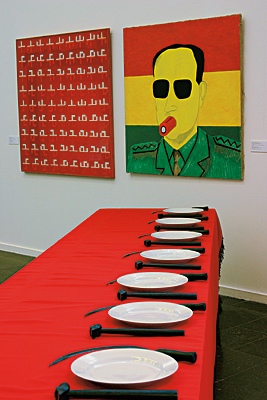















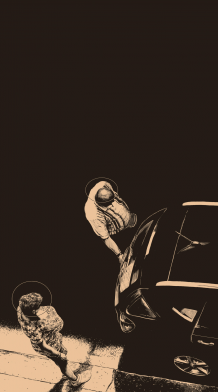




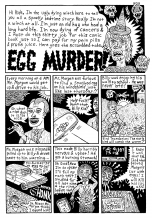
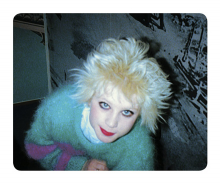
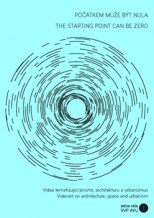
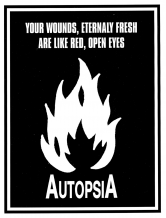


 New book by I.M.Jirous in English at our online bookshop.
New book by I.M.Jirous in English at our online bookshop.
Комментарии
Статья не была прокомментированаДобавить новый комментарий